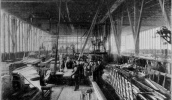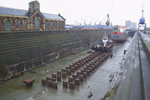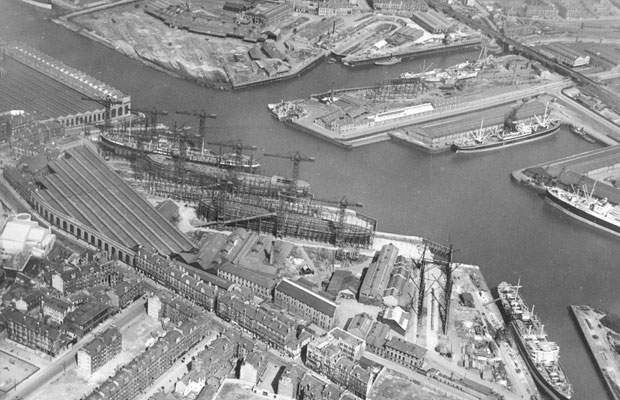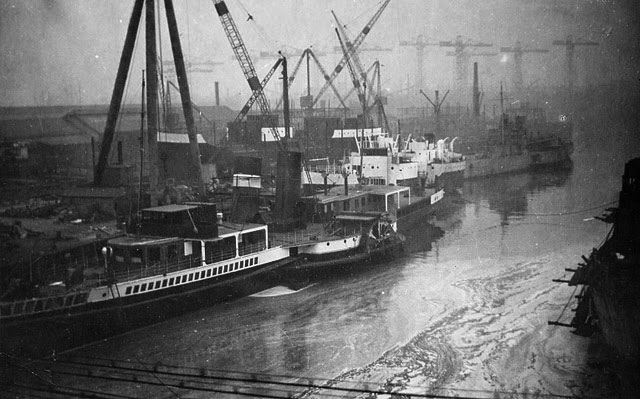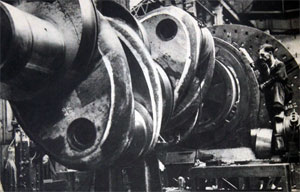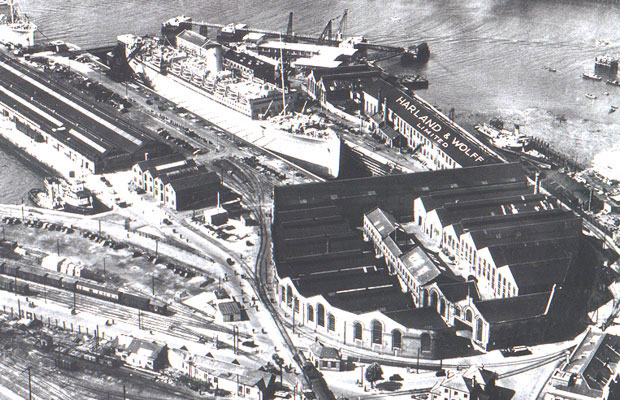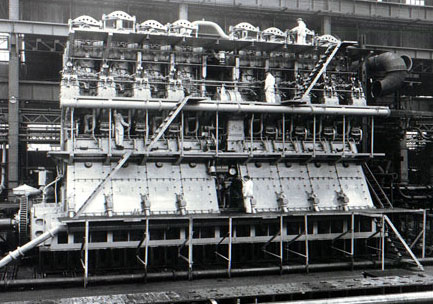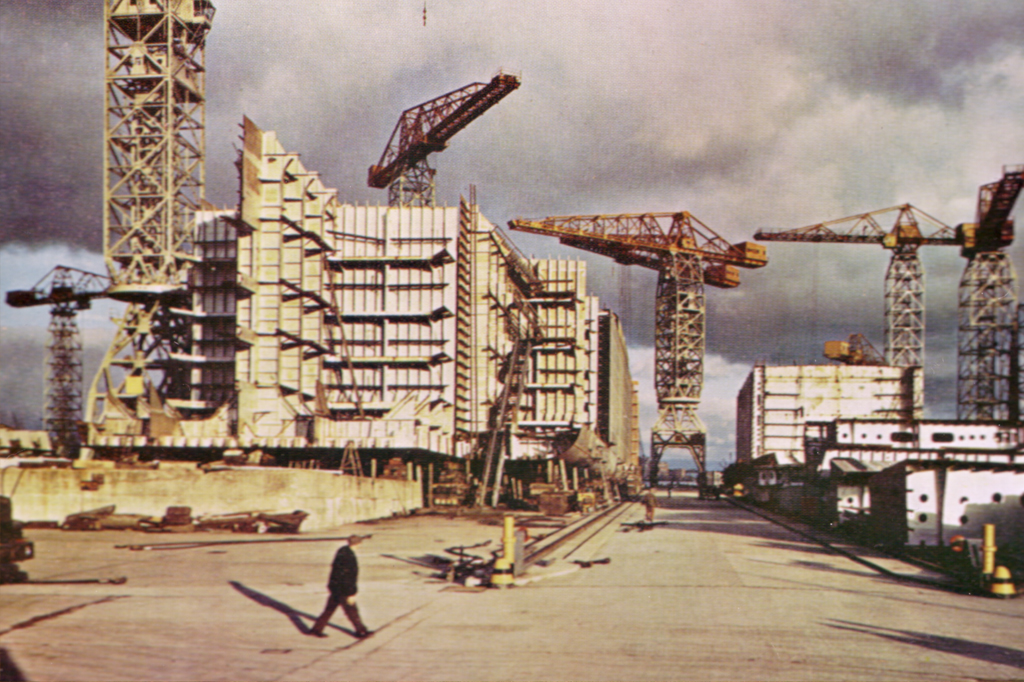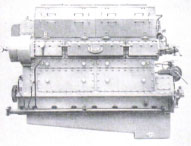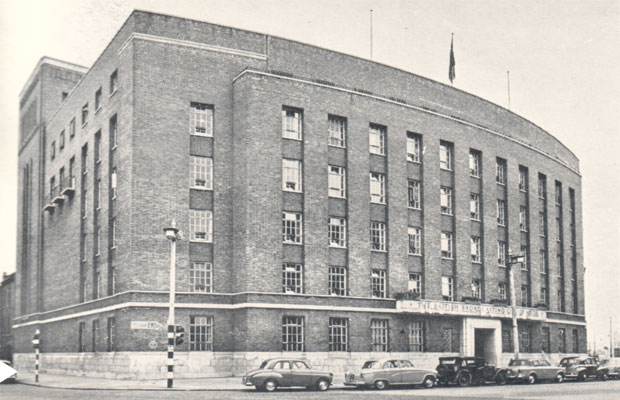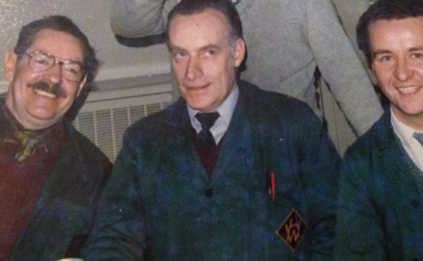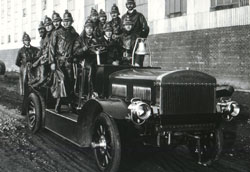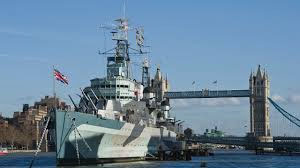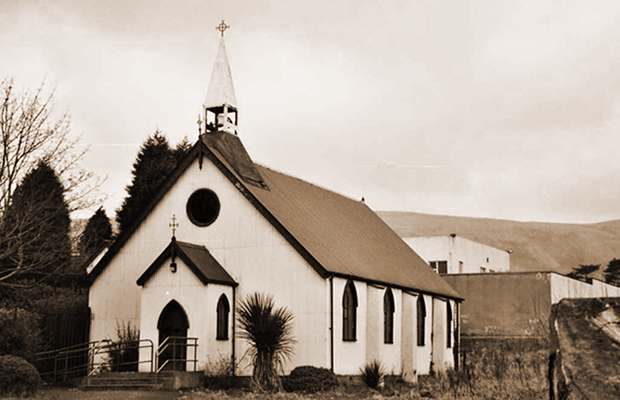She had been armed with eight six-inch guns and two six-pounders, as well as Maxim machine guns and depth charges. Her hull, superstructure and funnel had been painted battleship grey, and with four of her six-inch guns placed on the forecastle she looked more like a warship than an ocean liner. Unfortunately, like all the converted liners her high hull and superstructure made a very easy target, a fact which was to send her sister, Alcantara, to the bottom of the Norwegian Sea. Consisting of twenty-four converted warships, the 10th Cruiser Squadron was to play a most important role in the economic blockade of Germany. Its duty was to challenge and stop any ships in tIe area between the north of Scotland and Iceland and, in the summer months, north of Iceland as well. The Andes, with her sister ships, was based at Liverpool and she remained with the 10th Cruiser Squadron until December 1917, when all the ships of the force were dispersed to other duties.
Exactly seven days after departing from the Mersey on her first patrol, the Andes intercepted her first neutral vessel when she stopped the ss Bretagne and sent her into Kirkwall under an armed guard. During the summer of 1915 she regularly intercepted ships, and she remained in patrol with only short breaks in Liverpool and at Busta Voe, which was a coaling station. In November that year she underwent a two-week refit at Liverpool, and Christmas that year was spent at sea in the northern waters between Iceland and northern Scotland, as was the New Year. On 24th February 1916 she intercepted the Norwegian American liner ss Kristianiafjord, which was sent into Kirkwall with an armed boarding party. Two days later Andes sent the ss Baden in to be searched. On 29th November 1916, the Andes was on patrol line ‘0’ off the Norwegian coast with the Alcantara, her sister ship. The two ships were roughly fifteen miles apart and in position 610.45’N/00,58E, after having received information from intelligence sources tat a German armed auxiliary cruiser was to attempt to break through the blockade. In view of this, extra look- outs had been posted throughout the two ships and in other ships on the patrol line.
At about 9am tat day the lookouts on board Alcantara sighted smoke in a north-westerly direction and almost simultaneously the Andes signalled, Enemy in sight, steering north-east.” There was some confusion over the exact position of the mystery vessel, but at 9. iSam the Alcantara intercepted what appeared to be a Norwegian cargo ship. The vessel was flying the Norwegian flag at the stem and had the flag painted on her sides, as was the custom wit neutral shipping. The name Rena was painted on her bows and, in response to signals, she stated that she was bound from Rio de Janeiro to Trondheim, which seemed to be in order By lOam the two ships were some 2,500 yards apart and boarding boats were being swung out on Alcantara when the Norwegian flag was hauled down and hitherto concealed 5.9in guns were uncovered forward and aft. Almost immediately one of the enemy’s guns opened fire smashing the boarding party’s boat. Alcantara returned the fire and a full scale action ensued. By 10.50 am the enemy ship was on fire and out of action, but unfortunately the Alcantara was listing badly and obviously sinking. At 11am she sank and thirty-five minutes later the Andes and the light cruiser Comas (a sister to the Ulster-based RNVR ship Caroline) arrived on the scene and opened fire on the German ship. At 1pm that day the enemy ship sank and both vessels searched for and picked up survivors. The German ship was in fact the heavilyarmed raider Greif and she had left Kiel some fifty-six hours previously, bound for the Atlantic on a raiding voyage.
By 337pm that afternoon all the survivors had been rescued and the ships were able to resume their patrol. Three days later the Andes steamed into Liverpool with ill German prisoners, including one officer. After this she made day patrols from Liverpool until the end of that month when she once again joined the Northern Patrol. The Andes continued these duties until December 1917 when she left Liverpool for Murmansk in Russia. In the aftermath of the revolution in tat country a number of British seamen from the ss Glodale had been trapped in Murmansk, together with a few Royal Navy personnel. After embarking these men she left the Russian port on 14th January 1918, bound for the Clyde where her passengers were disembarked. Following her voyage to Russia the Andes was transferred to Devonport from where she made a cargo voyage in convoy to Halifax NS. In April 1918 she left Glasgow for Rio de Janeiro, which was a familiar route for this former Royal Mail Line ship. After two round voyages to Sout America and one to New York, she was laid up in Brocklebank Dock, Liverpool for a refit. This was completed on 10th November 1918, the day before the Armistice, and two days later she left for her final voyage under the White Ensign, to Bermuda and New York, arriving back in Liverpool on 18th December where she discharged her cargo and ammunition. On the last day of 1918 she was paid off for re-conversion to a passenger liner.
In the spring of 1919 the Andes was back in her company’s livery once again, and she returned to the South American trade for ten unbroken years, normally sailing from Southampton to the River Plate. By 1929, new tonnage had been added to the Royal Mail Line fleet, including the second Asturias and Alcantara (launched as the world’s largest motor ship, which, like her predecessor, was also involved in action with a German armed raider, this time during the Second World War), and the five ‘Highland’ sisters. It was decided that the Andes would be converted for further service as a cruise ship, and so she went into dock at Liverpool where the work began. By the end of that year she had been transformed, wit her hull painted white and her single funnel now a buff colour. She had also been converted to bum fuel oil and her accommodation had been altered to carry just 450 first class passengers. In keeping with her new role, a swimming pool had been built amidships on the boat deck and, perhaps most importantly of all, her name was changed to Atlantis.
Cruising from Southampton as Atlantis
The Atlantis was based mainly at Southampton for cruising, although she also sailed from London and Liverpool on occasions. She cruised to the Mediterranean, the Norwegian Fjords and the Northrn Capitals, as well as to the West Indies, South America and into the Pacific Ocean. She quickly built up a reputation for comfort and there is no doubt that during those inter-war years she was one of Britain’s most popular cruise ships. In the summer of 1935 she made a special cruise to coincide with King George V’s Silver Jubilee Naval Review off Spithead. On completion of a Fjords cruise, she returned to Tilbuty on 15th July, and after disembarking her passengers and embarking another group, she sailed the same day for the Solent, arriving the following day. After the review was over she took her passengers for a cruise the Channel before returning to London on the morning of 18th July 1935, to prepare for yet another cruise north to Norway. That is just a small example of her busy bruising schedule. Four years later, when war clouds were once more looming over Europe, the Atlantis was again cruising to the fjords and the Baltic ports. She left London on 12th August 1939 and the voyage took her to Oslo; Copenhagen, Hehinki and Stockholm. On 22nd August she was in Danzig, which was bf cburse An ‘dpen city’ and the object of Hitlet’s latest aggression. That same day the German-Soviet non-aggression pact was sighed in Moscow and with the rise in tension in Europe, together with reports of Ger- man troops massing on the Polish border, the Admiralty recalled the Atlantis to London, thereby curtailing the cruise. A proposed call at Hamburg was cancelled and the vessel returned via the Kid Canal, actually transiting the waterway on 23rd August. At Brunsbuttel, which is at the western end of the canal, German police and customs officials boarded the ship to confiscate films from passengers and crew. It was a clear sign of the deteriorating situation in Europe and the worsening political crisis between the UK and Germany. From the Kid Canal the Atlantis returned to London where she was requisitioned by the government.
Second World War Hospital Ship
The Atlantis’ role in the Second World War was very different from her function in the previous war, and she was sent to Southampton for conversion into hospital ship No 33. She had 400 hospital beds and a medical staff of 150, which included dental officers, and was initially based at Alexandria, Egypt. In the spring of 1940 she was back in European waters for the brief campaign in Norway, and on 8th June 1940, in company with the Orient Line ship Oranza and the aircraft carrier Glorious, she left Harstad with wounded service personnel on board. Unfortunately, the ships were intercepted by a force of German warships led by the Scharnhorst, Gneisenau and the Hipper. Both the Oramo and the Glorious were sunk, but the Atlantis was ordered to keep radio silence and continue her voyage.
In the summer of 1940 all fithting on the mainland of Europe ceased and the Atlantis moved back to the Middle East for a campaign which stated with the Italian invasion of British Somaliland. In early 1941 she was present at Madagascar for the British invasion of the island, transporting the casualties to h6s~itals in Durban. Seventeen months latex she was back in Liverpool when, on 1st October 1943, news leaked out that negotiations were going on throfigh the neutral Swedish government for an exchange of Allied and German POWs. Shortly after this came the official announcement that the Atlantis and the linci Empress of RUssia were on their way to Gbthenburg with German prisoners They arrived in the port on the afternoon of 19th October 1943, and the German ships Rhegen and Meteor brought British POWs into the port. Over the next two days the exchange of personnel was completed and all the ships, both British and German, left Gothenburg at dawn on 21st October. It turned out that negotiations had been going on for two years and, despite the early leaking of the news, they were successfully completed. All the prisoners were sick or wounded and many of them were disabled. Amongst the men aboard the Atlantis were seventeen US service- men who had been taken to Gothenburg by train.
The Atlantis mercy mission ended in Liverpool on Tuesday 26th October 1943, when she arrived alongside the Princes Landing Stage with 790 repatriated Allied servicemen. The people of Merseyside gave them a rapturous welcome and the first man to disembark was Capt Ernest Halloway, a merchant navy officer who was blinded when his ship was attacked by a surface raider. There were over 100 stretcher cases, and the first of these to be carried ashore was a cheerful young US airman, who had been shot down over Germany. It must have been very moving to see all the men looking so bright and cheerful when all were destined for long courses of hospital rehabilitation.
The ship’s new voyage took her back to the Middle East and to Algiers in North Africa with Canadian nurse~. Just over a year later, in early 1945, she made several voyages between the IlK and New York with sick and wounded American troops. Following the end of the Second World War, the Atlantis remained in her role of hospital ship and in November 1946 she, along with the Almanzora and Asturias, were sol& outright to the government. The high cost of conversion work for such an elderly ship had obviously influenced the decision to keep her in government ser- vice, and she was still managed by the Royal Mail Line. For the next twelve months the Atlantis continued to carry invalid servicemen, including many from military hospitals in South Africa.
In early 1948 she was chartered by the New Zealand govern- ment for the transport of emigrants from the UK to that country. On a homeward voyage in Sane 1950 she transported Dutch families of the Royal Netherlands Army from newly-independent Indonesia. During the twenty-eight day voyage, sixty-two babies where born.Many of the children were given the first name ‘Atlantis’ while the ship was given the nickname ‘stork ship’ by the passengers.
Just over twelve months later, in November 195l, Atlantis was repatriating British servicemen’s families from the Suez Canal Zone, as outbreaks of violence forced the government to evacuate the wives and children and move the troops into heavily guarded perimeters in the Ismailiya area. She arrived in Southampton at the end of a voyage from Egypt on the afternoon of Friday 23rd November 1951, with 800 women and children on board. She made one more voyage from Liverpool to Port Said with 900 troop reinforcements. She had been due to sail on 30th December 1951, but she wa~ delitycti with mechanical problems in the engine room. After nearly thirty-nine years, the old machinery was worn out and, following her return to the UK, she was laid up in the Clyde until March 1952, ‘when she went to be broken up at Faslane.
She had enjoyed a distinguished career.
[Ships monthly May 1991] |
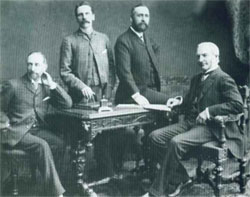 The PartnersHarland, Wolff, Pirrie and Wilson
The PartnersHarland, Wolff, Pirrie and Wilson
 The HatsChairmen, MD's, CEO's
The HatsChairmen, MD's, CEO's
 Sir Frederick RebbeckChairman 1930-41 1944-62
Sir Frederick RebbeckChairman 1930-41 1944-62
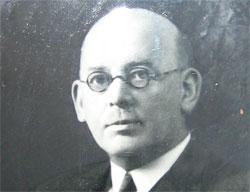 Sir Charles PalmourChairman 1941-1944
Sir Charles PalmourChairman 1941-1944
 John S BallieChairman 1962-1965
John S BallieChairman 1962-1965
 Dr Dennis RebbeckChairman 1965-1966
Dr Dennis RebbeckChairman 1965-1966
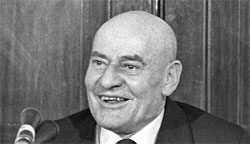 Sir John MallabarChairman 1966-1970
Sir John MallabarChairman 1966-1970
 Joe R EdwardsChairman 1970
Joe R EdwardsChairman 1970
 Alan WattActing Chairman 1970-1971
Alan WattActing Chairman 1970-1971
 Lord RochdaleChairman 1971- 1975
Lord RochdaleChairman 1971- 1975
 Sir Brian MortonChairman 1975-1980
Sir Brian MortonChairman 1975-1980
 Victor Alexander CookeChairman 1980-1981)
Victor Alexander CookeChairman 1980-1981)
 Vivian WadsworthChairman 1981-1982
Vivian WadsworthChairman 1981-1982
 Sir John ParkerChairman 1982-1992
Sir John ParkerChairman 1982-1992
 Islandmen(and Women)
Islandmen(and Women)
 Save our ShipyardSupport and solidarity
Save our ShipyardSupport and solidarity
 The War MemorialsWe Will Remember Them
The War MemorialsWe Will Remember Them
 The Bible Class
The Bible Class
 Nicknames
Nicknames
 The Yarns(and Tall Tales)
The Yarns(and Tall Tales)
 The Shipyard IndentureJW Mullholland
The Shipyard IndentureJW Mullholland

